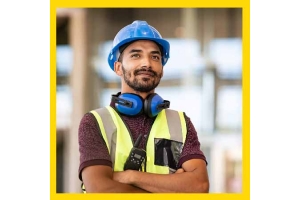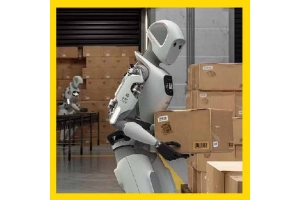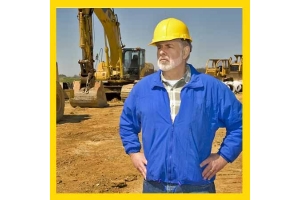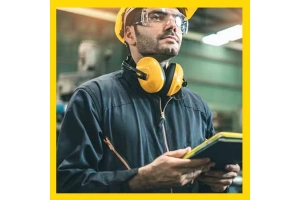Currency
November 15, 2020
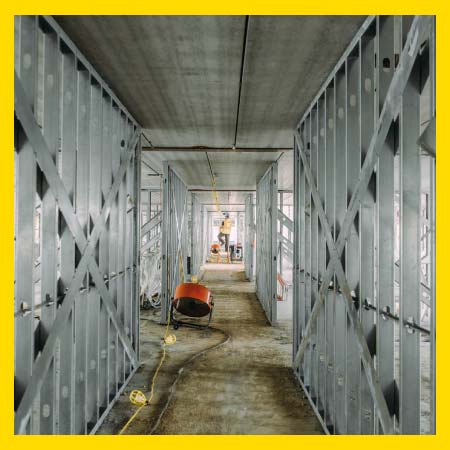
In the period 2019 to 2020, 111 people lost their lives in the workplace in the UK, 29 of these being killed in a fall from height. (https://www.hse.gov.uk/statistics/fatals.htmI) In 2018/2019 these numbers were 147 and 40, respectively. The year before was 144 and 35. This amounts to 26%, 27% and 24% of all fatalities in the workplace. (Bear in mind the figures for 2019/2020 do not highlight the issues around Covid-19 and the sustained period of economic lockdown in the UK, so this number could well have been higher under normal circumstances).
So why have I started this article with some statistics? Well, as you can see, the numbers have remained relatively the same during those years. Why is this the case? That is the topic of today’s article. Why do working at height accidents keep happening over and over again? Why do we keep losing our colleagues, friends and family members to the same things, year after year after year?
As a health and safety professional I am always looking to learn and grow, by undertaking CPD (Continuous Professional Development). As part of this ongoing development, I started to learn about Process Safety. Yes, this article is about working at height, but there is a point to what I am talking about here. I came across a video created by the US CSB (United States Chemical Safety Board of America) of an accident at Texas City Oil Refinery, Texas, that occurred in March 2005. This video is called “Anatomy Of a Disaster” and is great as a Case Study for Process Safety, and safety generally. In parts of the video they interview a gentleman called Professor Trevor Kletz, a chemical safety expert.
“organisations have no memory, only people have memory. if the lessons from incidents are not shared, then the same incidents will continue to happen”
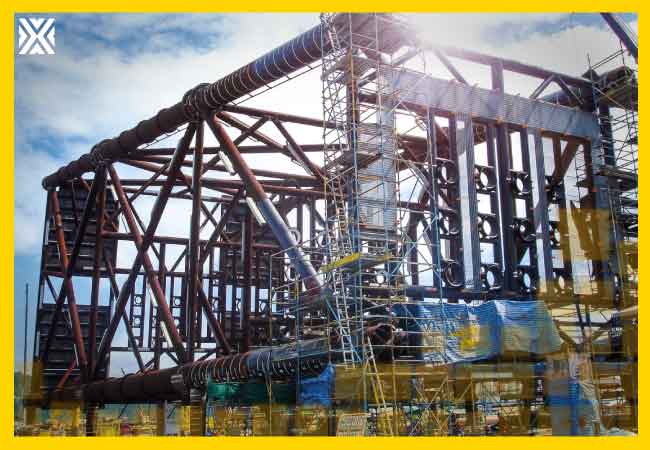
Professor Kletz said something in the video that really hit home with me: “Organisations have no memory, only people have memory.” In other words, if the lessons from incidents are not shared, then the same incidents will continue to happen. As human beings, we are often reluctant to acknowledge we have made mistakes and errors, or we do not want to be seen in a bad light. What if sharing the reason for the incident then saves the lives of others, however? This is where companies with good safety cultures will not only investigate the incident thoroughly, but will share the findings with their employees, contractors, and even other companies and parties interested in the information. This is also critical when key people in the organisation are moving on. A thorough handover is vital, so the newcomer is given an account of any historical incidents, so that they can understand what happened, and what the organisation has done since the incidents, to stop them happening again.
Working at height is often defined as a hazard, but it should actually be classified as a “Hazardous Activity”. This is because there is more than just the one hazard of height. If I showed you a picture of someone working on a sloping roof, when it was raining and windy, I am sure most people would be able to say “oh, they might get blown off the roof onto the floor below and hurt themselves”. What about the many other dangers potentially present when Working at height? These hidden dangers include falling objects, slip and trip hazards and environmental hazards (particularly weather related hazards such as high winds and rain). Many people see the height of the potential fall, and this certainly contributes to the consequences of a fall from height incident. The fall itself is not the trigger however. Falls can be caused by slipping or tripping on trailing cables or slippery surfaces, the sudden collapse of a structure or something load bearing (such as a scaffold or roofing) or even a dynamic change in environment, such as a sudden increase in wind speed. Falling objects also present a major threat, as they could land on people working below the workers, with enough force to cause serious injury or even fatalities (this could include a person falling from height not have their landing cushioned just because they landed on another person).
Not taking these things into account when conducting our risk assessments will mean incidents are doomed to repeat themselves, as not everything has been assessed and dealt with. The ideal thing to do with a task of working at height, is to use the hierarchy of control, and eliminate it. Through elimination, we get rid of the hazard altogether, which therefore means we also get rid of the associated risks. For example, we could use modern technology, such as a drone fitted with a camera, to inspect a tower or roof of a building, without having to physically send any people to the tower or roof. If there is nobody on the tower or roof, there is no potential for people to fall and suffer the consequences. Another example I can think of is to bring the problem to the workers, rather than the other way around. I know of one particular site that is able to lower streetlights to ground level, in order to change the lightbulbs, rather than sending people up to them using ladders or other types of access equipment. However, these are best case scenarios.
“one site is able to lower streetlights to ground level, in order to change the lightbulbs, rather than sending people up to them using ladders”
Everyone at work should be “Competent” to do their job. Competence can have many definitions, so to put it basically, workers should have the right mix and level of skills and knowledge, and be able to apply that to the task they are doing. This will come about mainly through formal training (remember in most countries’ Health and safety legislation, it is a legal requirement for workers to receive workplace training) and experience. Many Work at Height incidents happen as workers never receive this training, or it is of a very poor standard. It is also important to remember that sending workers on a generic “Work at Height” course may not be enough. They may need specific training, such as Scaffold Erection and Dismantling, MEWP Operator, or Rescue from Height.
Workers may also take shortcuts in order to get the job done. Again, this could be due to the training issue we just discussed. As they have not received the training, they do not realise the danger they are putting themselves and others in, by not following a procedure for example. It is important to know, however, that competent workers also take risks. A lack of supervision could tempt workers into taking actions/omissions they would not do under the normal circumstances of “being watched”. Workers may also be pressured into trying to get the job done quickly, whether that be by colleagues who want to go home early, or their employer has fallen behind in a project and is desperate to make up for lost time. A lot of these shortcuts are often seemingly small things, but usually have big consequences. For example, a worker may not have clipped their harness onto a scaffold. They have only gone up there to do a quick job, so they decide there is no need to “hook on” They lean on one of the guardrails of the scaffold, not realising another worker had loosened it at one end. The guardrail gives way under the worker’s weight. As they are not anchored to the scaffold, there is nothing to stop the worker falling off the scaffold to the floor 50ft below.
Another reason work at height incidents continue to happen, is a lack of understanding of the consequences. For example, most people know if you fall from a very high place (such as a cliff or tall building) you are probably not going to survive. Did you know that a fall of just 6ft can also be fatal? Many Truck drivers and Equipment Operators around the world are hurt or killed when falling from their trailers, cabins and equipment platforms. Office workers are routinely hurt from falling, after trying to reach objects or materials stored above head height (usually by climbing on a chair or other unsuitable piece of equipment). Many people do not realise also, that it is not just the height of the fall that determines the consequences. Do the victims strike any objects on the way down? What is the object or surface they land on? Which part of their body do they land on? All of these factors, and more, can dictate the outcome of a fall from height. Indeed, a person may be left suspended, or hanging in the air, which brings challenges and dangers all on its own, particularly in terms of rescuing the victim.
Another main danger here is that with a fall from height incident, you do not often get a second chance. Over the course of their career, a carpenter may whack their hand several times with a hammer, but at worst suffer a broken thumb. An office worker might get a staple in a finger a few times, nothing too dramatic. A person working on open roofs may only ever have one fall from height… because it kills them. Unfortunately, some people will often not understand the seriousness of this until they experience it themselves, or witness it happen to a co-worker, friend or family member. So training and education is vital in this scenario, particularly with members of the workforce who have the “it will never happen to me” attitude. I like to call this “Invincibility Syndrome” and have seen people time and time again get themselves, and/or someone else, hurt as they think they are untouchable and nothing will ever go wrong for them.
“a person working on open roofs may only ever have one fall from height… because it kills them”
Having this attitude usually leads to negligence and violation of rules and procedures. Often, however, people will also put themselves at risk as they feel they have no other choice, as they are the breadwinner of the family. Again, it is important to educate them. Ask them, “if they are hurt or killed in a Work at Height incident, how will their family pay the bills? Put food on the table?” Making these points will often help the worker realise how important they really are, and they will do things the right way if not for themselves, then certainly for the sake of their loved ones.
So what can we do to stop these things from happening? Training and education are vital, as I said before, to ensure that persons working at height (and indeed those managing them) are competent for their roles. Knowledge is power, after all. Ensure all lessons of working at height related incidents are shared and discussed, not just “acknowledged” then tucked away in a drawer. Use historical incidents as case studies to remind people of what went on before, and how to stop it happening again. Certain jobs and tasks can become quite a specialist area where Working at Height is concerned, so use consultants and specialists to plan and execute the work accordingly, particularly so you do not miss any of the hidden hazards we mentioned earlier. When planning the work, think about how you can do it without having to leave the ground, rather than how to stop people falling and/or mitigate the consequences. Giving someone a harness and lanyard should not be our first choice. Consider the use of technology or totally designing out the need for work at height, in order to totally eliminate (or dramatically reduce) the working at height hazards and associated risks. As always, plan for the worst and hope for the best. Ensure you have a robust rescue plan (with associated equipment and personnel) in place, just in case something does go wrong. Find out why accidents happen, so that they don’t now, or in the future.
So why have I started this article with some statistics? Well, as you can see, the numbers have remained relatively the same during those years. Why is this the case? That is the topic of today’s article. Why do working at height accidents keep happening over and over again? Why do we keep losing our colleagues, friends and family members to the same things, year after year after year?
Memories
As a health and safety professional I am always looking to learn and grow, by undertaking CPD (Continuous Professional Development). As part of this ongoing development, I started to learn about Process Safety. Yes, this article is about working at height, but there is a point to what I am talking about here. I came across a video created by the US CSB (United States Chemical Safety Board of America) of an accident at Texas City Oil Refinery, Texas, that occurred in March 2005. This video is called “Anatomy Of a Disaster” and is great as a Case Study for Process Safety, and safety generally. In parts of the video they interview a gentleman called Professor Trevor Kletz, a chemical safety expert.
“organisations have no memory, only people have memory. if the lessons from incidents are not shared, then the same incidents will continue to happen”

Professor Kletz said something in the video that really hit home with me: “Organisations have no memory, only people have memory.” In other words, if the lessons from incidents are not shared, then the same incidents will continue to happen. As human beings, we are often reluctant to acknowledge we have made mistakes and errors, or we do not want to be seen in a bad light. What if sharing the reason for the incident then saves the lives of others, however? This is where companies with good safety cultures will not only investigate the incident thoroughly, but will share the findings with their employees, contractors, and even other companies and parties interested in the information. This is also critical when key people in the organisation are moving on. A thorough handover is vital, so the newcomer is given an account of any historical incidents, so that they can understand what happened, and what the organisation has done since the incidents, to stop them happening again.
Hidden dangers
Working at height is often defined as a hazard, but it should actually be classified as a “Hazardous Activity”. This is because there is more than just the one hazard of height. If I showed you a picture of someone working on a sloping roof, when it was raining and windy, I am sure most people would be able to say “oh, they might get blown off the roof onto the floor below and hurt themselves”. What about the many other dangers potentially present when Working at height? These hidden dangers include falling objects, slip and trip hazards and environmental hazards (particularly weather related hazards such as high winds and rain). Many people see the height of the potential fall, and this certainly contributes to the consequences of a fall from height incident. The fall itself is not the trigger however. Falls can be caused by slipping or tripping on trailing cables or slippery surfaces, the sudden collapse of a structure or something load bearing (such as a scaffold or roofing) or even a dynamic change in environment, such as a sudden increase in wind speed. Falling objects also present a major threat, as they could land on people working below the workers, with enough force to cause serious injury or even fatalities (this could include a person falling from height not have their landing cushioned just because they landed on another person).
Not taking these things into account when conducting our risk assessments will mean incidents are doomed to repeat themselves, as not everything has been assessed and dealt with. The ideal thing to do with a task of working at height, is to use the hierarchy of control, and eliminate it. Through elimination, we get rid of the hazard altogether, which therefore means we also get rid of the associated risks. For example, we could use modern technology, such as a drone fitted with a camera, to inspect a tower or roof of a building, without having to physically send any people to the tower or roof. If there is nobody on the tower or roof, there is no potential for people to fall and suffer the consequences. Another example I can think of is to bring the problem to the workers, rather than the other way around. I know of one particular site that is able to lower streetlights to ground level, in order to change the lightbulbs, rather than sending people up to them using ladders or other types of access equipment. However, these are best case scenarios.
“one site is able to lower streetlights to ground level, in order to change the lightbulbs, rather than sending people up to them using ladders”
“Competence”and shortcuts
Everyone at work should be “Competent” to do their job. Competence can have many definitions, so to put it basically, workers should have the right mix and level of skills and knowledge, and be able to apply that to the task they are doing. This will come about mainly through formal training (remember in most countries’ Health and safety legislation, it is a legal requirement for workers to receive workplace training) and experience. Many Work at Height incidents happen as workers never receive this training, or it is of a very poor standard. It is also important to remember that sending workers on a generic “Work at Height” course may not be enough. They may need specific training, such as Scaffold Erection and Dismantling, MEWP Operator, or Rescue from Height.
Workers may also take shortcuts in order to get the job done. Again, this could be due to the training issue we just discussed. As they have not received the training, they do not realise the danger they are putting themselves and others in, by not following a procedure for example. It is important to know, however, that competent workers also take risks. A lack of supervision could tempt workers into taking actions/omissions they would not do under the normal circumstances of “being watched”. Workers may also be pressured into trying to get the job done quickly, whether that be by colleagues who want to go home early, or their employer has fallen behind in a project and is desperate to make up for lost time. A lot of these shortcuts are often seemingly small things, but usually have big consequences. For example, a worker may not have clipped their harness onto a scaffold. They have only gone up there to do a quick job, so they decide there is no need to “hook on” They lean on one of the guardrails of the scaffold, not realising another worker had loosened it at one end. The guardrail gives way under the worker’s weight. As they are not anchored to the scaffold, there is nothing to stop the worker falling off the scaffold to the floor 50ft below.
Perception of risk
Another reason work at height incidents continue to happen, is a lack of understanding of the consequences. For example, most people know if you fall from a very high place (such as a cliff or tall building) you are probably not going to survive. Did you know that a fall of just 6ft can also be fatal? Many Truck drivers and Equipment Operators around the world are hurt or killed when falling from their trailers, cabins and equipment platforms. Office workers are routinely hurt from falling, after trying to reach objects or materials stored above head height (usually by climbing on a chair or other unsuitable piece of equipment). Many people do not realise also, that it is not just the height of the fall that determines the consequences. Do the victims strike any objects on the way down? What is the object or surface they land on? Which part of their body do they land on? All of these factors, and more, can dictate the outcome of a fall from height. Indeed, a person may be left suspended, or hanging in the air, which brings challenges and dangers all on its own, particularly in terms of rescuing the victim.
Another main danger here is that with a fall from height incident, you do not often get a second chance. Over the course of their career, a carpenter may whack their hand several times with a hammer, but at worst suffer a broken thumb. An office worker might get a staple in a finger a few times, nothing too dramatic. A person working on open roofs may only ever have one fall from height… because it kills them. Unfortunately, some people will often not understand the seriousness of this until they experience it themselves, or witness it happen to a co-worker, friend or family member. So training and education is vital in this scenario, particularly with members of the workforce who have the “it will never happen to me” attitude. I like to call this “Invincibility Syndrome” and have seen people time and time again get themselves, and/or someone else, hurt as they think they are untouchable and nothing will ever go wrong for them.
“a person working on open roofs may only ever have one fall from height… because it kills them”
Having this attitude usually leads to negligence and violation of rules and procedures. Often, however, people will also put themselves at risk as they feel they have no other choice, as they are the breadwinner of the family. Again, it is important to educate them. Ask them, “if they are hurt or killed in a Work at Height incident, how will their family pay the bills? Put food on the table?” Making these points will often help the worker realise how important they really are, and they will do things the right way if not for themselves, then certainly for the sake of their loved ones.
What can be done?
So what can we do to stop these things from happening? Training and education are vital, as I said before, to ensure that persons working at height (and indeed those managing them) are competent for their roles. Knowledge is power, after all. Ensure all lessons of working at height related incidents are shared and discussed, not just “acknowledged” then tucked away in a drawer. Use historical incidents as case studies to remind people of what went on before, and how to stop it happening again. Certain jobs and tasks can become quite a specialist area where Working at Height is concerned, so use consultants and specialists to plan and execute the work accordingly, particularly so you do not miss any of the hidden hazards we mentioned earlier. When planning the work, think about how you can do it without having to leave the ground, rather than how to stop people falling and/or mitigate the consequences. Giving someone a harness and lanyard should not be our first choice. Consider the use of technology or totally designing out the need for work at height, in order to totally eliminate (or dramatically reduce) the working at height hazards and associated risks. As always, plan for the worst and hope for the best. Ensure you have a robust rescue plan (with associated equipment and personnel) in place, just in case something does go wrong. Find out why accidents happen, so that they don’t now, or in the future.
